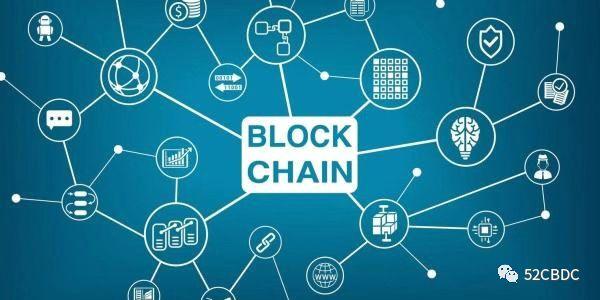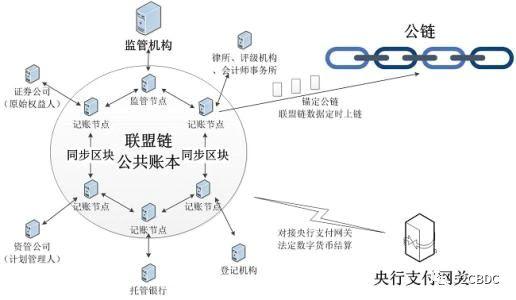Analysis: Is 2020 the first year of the blockchain?
On October 4, 2019, the Political Bureau of the Central Committee of the Communist Party of China held a blockchain learning conference, emphasizing the need to raise the development of blockchain technology to the height of national strategy. It was clear that blockchain should be used as an important breakthrough in independent innovation of core technologies, and the main attack should be clearly defined. Direction, increase investment, focus on capturing a number of key core technologies, and accelerate the development of blockchain technology and industrial innovation. This major strategic deployment not only indicates the direction and focus of China's blockchain technology research and development, but also gives the blockchain industry an unlimited operating space for change and landing. It can be expected that 2020 will be a year of large-scale landing of blockchain applications.
The first year of the blockchain landing in 2020
First, value creation. Blockchain value creation is creating trust. Blockchain, as a distributed ledger technology, transforms traditional trust in centralized credit institutions into data trustworthiness for the blockchain ledger. This can not only greatly reduce the transaction costs caused by the existence of credit intermediaries, but also solve the problem of "centralized" data security caused by credit intermediaries. The blockchain also features tamper-resistant and highly transparent features to ensure the authenticity and accountability of data, reduce audit processes, and reduce external regulatory costs. Therefore, the primary function of the blockchain is to be able to create more new types of transaction models and create new value through digital public trust.
Second, value transfer and payment. Blockchain value transfer and payment is realized through digital assetization. In the era of big data, all assets can be digitized into digital assets. Digital assets are equity certificates in the form of electronic data. It represents a right, an intrinsic value, which can represent all proof of rights, from identity cards to academic diplomas, from currency to bills, from keys, tickets to points, coupons, from stocks to bonds, from invention patents To the tax certification, from the certification of agricultural and sideline products to the manufacture of industrial products, all social and economic certifications can be represented by digital assets. One of the important functions of the blockchain is that it can realize the encryption, confirmation and circulation of digital assets. At the same time, the decentralized value transfer characteristics of the blockchain have also given the currency and other degrees of freedom to the circulation and exchange of digital assets.

Therefore, because of its inherent value, the blockchain represents the infrastructure of the new generation of the Internet to promote industrial transformation and upgrading, and has a broad industrial application prospect. Although the basic technology of the current blockchain is not yet perfect, from a global perspective, the blockchain has been widely used in scenarios. In response, China's development of blockchain technology and the acceleration of its application in scenarios will not only promote the development of industrial innovation, but also help solve the basic technical problems of blockchain.
- Is the privacy feature useful? A quick overview of the usage of privacy coins and coin mixing services
- Italian securities regulator establishes cryptocurrency regulations, has closed 2 cryptocurrency trading sites
- Investment is risky: who is more at risk from Bitcoin and Apple stocks?
The direction of the blockchain landing
1. Increased alliance chain platforms. After the blockchain has risen to the national level of China, as many star public chains have fallen to the throne, the endless disputes over the supporters of public and alliance chains and the competition of "separation" seem to have decided the first stage The winner-the alliance chain.
Under the policy guise, the argument that "the alliance chain is the future of the blockchain" has gradually become the "mainstream" voice. In 2019, the Cyberspace Office released the first batch of domestic blockchain information service filing numbers, and 197 blockchain information service projects from 18 provinces and cities nationwide were among them.

Among them, the number of alliance chains is as high as 116, accounting for 59%, which is close to 60%. There are only 25 public chain projects, accounting for 13%. The momentum of the alliance chain is not weak.
2020 is just the beginning, and more and more public chain teams will choose the alliance chain in the future.
2. Blockchain applications have increased. From the perspective of landing applications, blockchain technology can effectively improve the efficiency and transparency of services in various industries. For example, the following three aspects:
- Industries that require multiple parties to share data . One of the advantages of the blockchain is the use of digital signatures and other cryptographic technologies to realize the sharing of information between multiple parties on the premise of ensuring the uniqueness of the data and the immutability of ownership. This solves the problem of how multiple parties can share information without changing data ownership. Cross-border payment, cross-border trade financing, supply chain finance, asset securitization (ABS), electronic invoices and other application scenarios often require mutual cooperation between independent financial institutions. Blockchain can significantly reduce the communication costs of all parties.
- Industries that require high frequency repetition during operation . Smart contracts based on blockchain can replace simple labor by realizing business automation. It is very suitable for replacing labor on high-frequency repetitive business such as post-trade settlement, regulatory risk control, etc., but it is not very suitable for low-frequency, high-customization business such as IPO, merger and acquisition.
- Industries that require asset data to be chained. An ideal state of the blockchain is that all transaction elements are implemented on the chain, which requires that currency, assets, legal provisions, etc. are implemented using blockchain technology. However, in practice, how to ensure the accuracy of the data when these asset elements are on the chain and the binding relationship between on-chain information and off-chain assets are important legal and technical challenges, which are also the main reasons for the failure of ICOs one.
Therefore, the blockchain has a broad application prospect. In 2020, when the blockchain technology is becoming more mature and the blockchain policy is advocating, the implementation of the blockchain will be accelerated and there will be explosive growth.
We will continue to update Blocking; if you have any questions or suggestions, please contact us!
Was this article helpful?
93 out of 132 found this helpful
Related articles
- In-depth analysis: the transition of the national digital governance system after the epidemic
- These two crypto companies are valued at hundreds of millions of dollars. Which big-name investors are investing?
- The members of the Golden Chain Alliance have “stand on their own feet”, where is the path of the Chinese Alliance-type blockchain open source platform?
- The Secret History of Bitcoin: In which regions is Bitcoin more popular?
- Zhang Xiaojun: Huawei promotes the application of blockchain in medical data sharing and public welfare fundraising, and uses science and technology to fight the epidemic
- 66 new additions in a year, 321 Australian registered cryptocurrency exchanges
- DeFi ushers in new milestones, finance is still Ethereum's main use case





